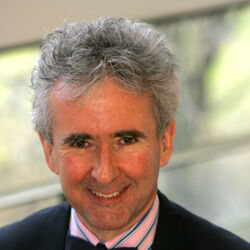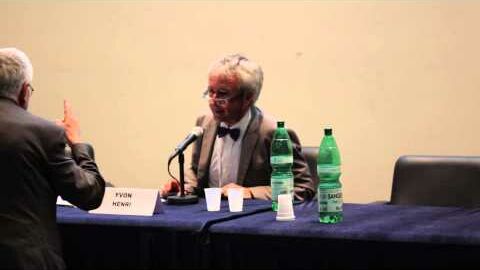Highlight Lecture 1: Outcome of the World Radiocommunication Conference 2012 (WRC-12) and future challenges for space services
October 2nd 201218:15 – 19:15
The first Highlight Lecture of IAC 2012 addressed the critical issue of orbital radio spectrum resource and its regulation through a legal regime – which is codified in the ITU Constitution/Convention and the Radio Regulations.
The speaker, Yvon Henri, Chief of the Space Services Department for the ITU Radiocommunication (ITU-R) Bureau in Switzerland, started with an overview of the complex work of the International Telecommunications Union (ITU) in allocating and maintaining the radio frequency spectrum.
Henri said that the World Radiocommunication Conference 2012 (WRC-12) at the start of the year had reinforced the commitment of previous Conferences to the special needs of meteorological and hydrological services, despite competing pressure for scarce radio frequencies from wireless technology and other uses.
He explained, for example, that the work was vital to ensure that weather forecasts, disaster warnings and climate monitoring remained available to the meteorological community and was protected from interference from other applications.
Among the key tasks that affect all radiocommunication services currently being addressed by the ITU-R are continuing to ensure the effective use of the radio-frequency spectrum and undertaking studies concerning the development of radiocommunication systems.
The world at large is now witnessing a phenomenal increase in the use of wireless systems in a myriad of applications and it is the international radiocommunication standards (such as the ITU-R Recommendations) that will underpin the entire global communications framework.
Overall, the ITU-R manages the main principles and lays down the specific regulations governing the following major elements:
- frequency spectrum allocations to different categories of radiocommunication services,
- rights and obligations of member administrations in obtaining access to the spectrum/orbit resources,
- international recognition of these rights by recording frequency assignments and, as appropriate, orbital positions used or intended to be used in the Master International Frequency Register.
ITU-R Study Groups also carry out studies related to the continuing development of radiocommunication systems, such as those used in disaster mitigation and relief operations.
For example, telecommunication is critical at all phases of disaster management where aspects of emergency radiocommunication services associated with disasters include disaster prediction, detection, alert and disaster relief.
In certain cases, when the ‘wired’ telecommunication infrastructure is significantly or completely destroyed by a disaster, only radiocommunication services can be employed for disaster relief operations.
Henri recalled that in recent years a significant achievement had been the development and establishment of the IMT-2000 global standard for cellular communications.
IMT-2000 (widely known as 3G) is now widely deployed around the world and is being rapidly enhanced. In the future, IMT-Advanced will provide a global platform on which to build the next generation of mobile services – new interactive services for fast data access, unified messaging and broadband multimedia.
Based on the results of the World Radiocommunication Conference 2012, the world space science community has secured the future of passive remote sensing above 275 GHz, gained a new primary allocation in the band 22.55-23.15 GHz for space research service (Earth-to-space) operations, protected the space research service (space-to-Earth) operations in the 37-38 GHz band from possible interference from aeronautical mobile systems, and gained considerable recognition for the essential role and global importance of Earth observation radiocommunication applications throughout the world.
In addition, passive remote sensing systems using the 86-92 GHz passive band are now better protected, and the meteorological community now has access to an additional 50 MHz of downlink spectrum for non-geostationary meteorological satellites in the 7 850-7 900 MHz band for a total of 150 MHz of contiguous downlink spectrum.





